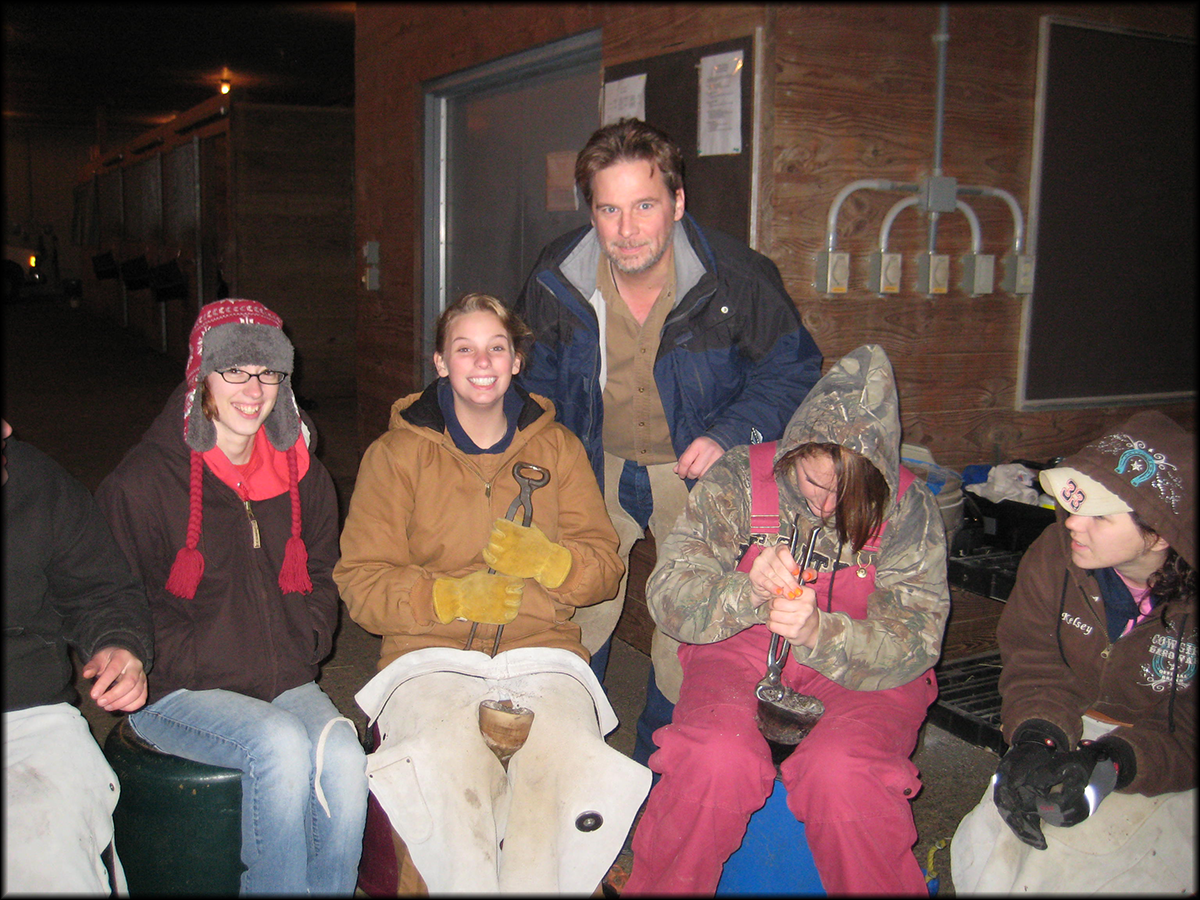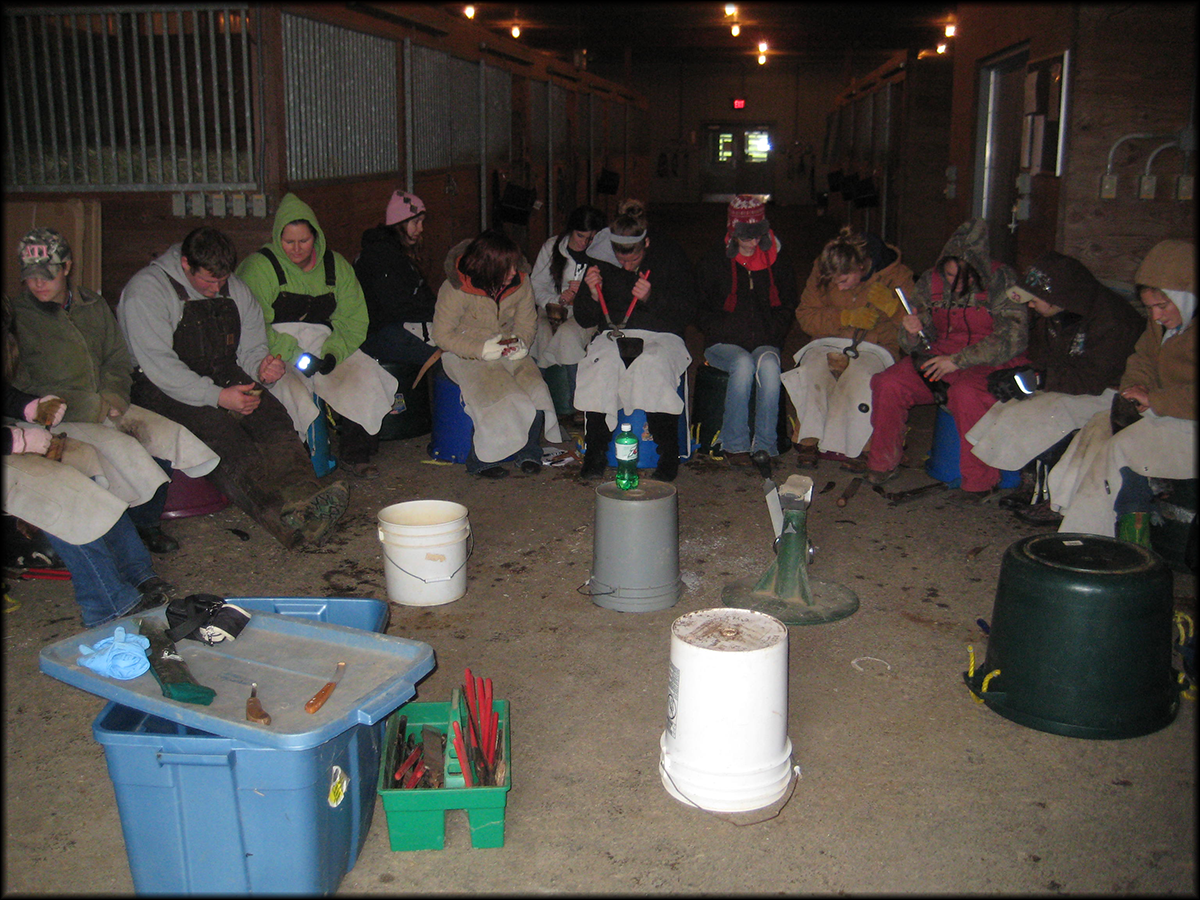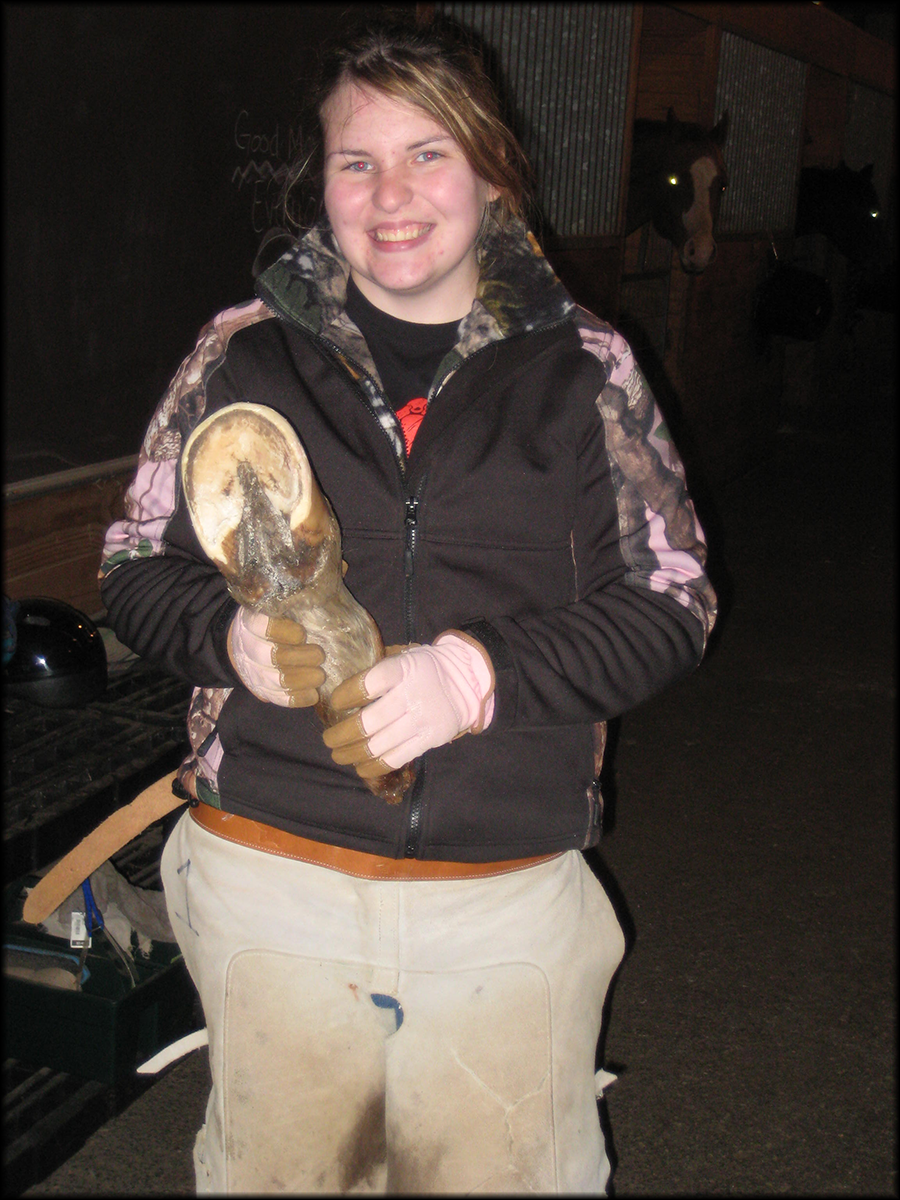A very quick estimate reveals that I’ve now spent well over 10,000 hours in university classrooms over the past 34 years, teaching a wide variety of technical subjects to students of all ages and backgrounds. Those teaching experiences, along with my other parallel careers/passions – electronics engineer, hoof care professional, recording engineer, and jazz musician – have indeed given me a very rich and full life. And while I’d be hard-pressed to pick a “favorite career” among them, I have to say that I truly enjoy sharing my knowledge with others.
The last couple of weeks have been particularly rewarding, because in addition to my usual classes, I’ve had the pleasure of teaching some basic hoof theory and trimming to the Horse Health & Disease class in our Horse Production and Management degree program. I’m a big fan of such two-year programs, because, depending on your career objectives, I believe programs like this offer students the best return on their investment in terms of practical, real-world experience coupled with relevant theory and some broader liberal-arts education. Most of these programs have a particular focus; in our case, we have an emphasis on reproduction and genetics, and students gain considerable experience in both live cover and artificial insemination in our 46-stall barn, breeding shed, and laboratory. And Dr. Karen Wimbush, the program’s Technical Coordinator, is to be commended for her dedication to continually improving our course offerings.
This three-week series of lectures and laboratory experiences has been designed to equip the students with the knowledge necessary to make informed decisions about hoof care based on science, and not on the hearsay, speculation, and out-and-out incorrect information so often offered up by well-intending but misinformed horse owners, farriers, and veterinarians. And so our first class concentrated on examining the characteristics of both a correct and incorrect landing, the factors that determine the form of the hoof and how it lands, and the short- and long-term movement and health consequences of proper and improper landings – a great start for any horse owner!
Then, this past Thursday, we gathered at the barn to brave the cold and do some hands-on trimming of cadaver hooves. “Sounds gruesome!” you might say, but there are some important advantages (as well as a couple of disadvantages) to using cadaver hooves to teach trimming. First and foremost, it minimizes the risk to the student. It’s enough of a struggle for a beginner to learn to use the tools correctly, so complicating the situation with trying to properly hold and safely manage a horse at the same time is, in my opinion, not in everyone’s best interest. I once heard someone liken hoof trimming to trying to carve a duck out of a flying piece of wood, and, believe me, that’s very close to the truth! And second, it also minimizes the risk to the horse. After all, it’s pretty hard to lame a dead horse. So I generally prefer to begin any hands-on instruction using cadavers.
The lead-up to the cadaver trimming class got off to a bit of a rocky start, though. The short version of the story is that the frozen hooves were delivered on Friday while I was in Massachusetts visiting Annie. Trouble was, they couldn’t find them to get them into our big walk-in freezer. And so the hooves ended up sitting in my office all weekend, thawing and smelling! And then Hurricane Sandy caused my return flight to be cancelled, so instead of teaching half the class Tuesday and half Thursday, per the original plan, we had to group the entire class together for our big trim adventure with the smelly hooves. But all’s well that ends well, as they say, and everyone did a fine job with their hooves.
Next week, we’ll finish up this brief look at hooves by trimming live horses. And even though we’ve barely scratched the surface in terms of both theory and practice, if this group is like every other person I’ve taught how to trim, they’ll emerge with a new respect for their hoof care provider, whomever he/she is!


